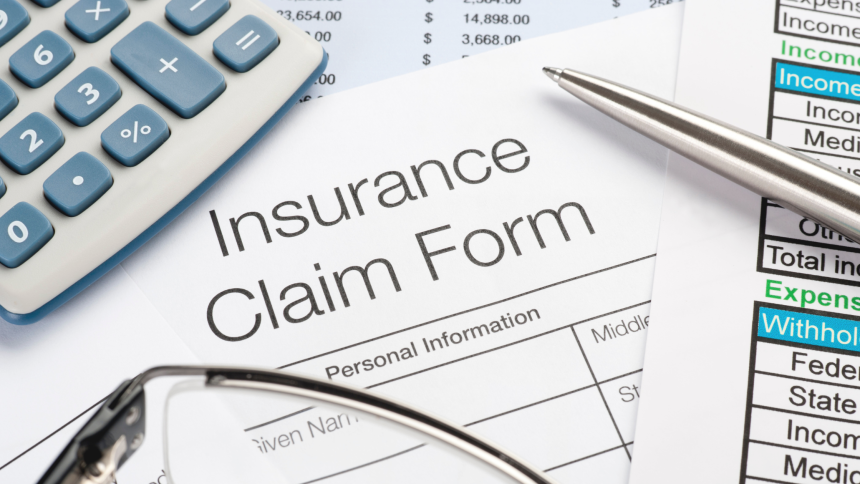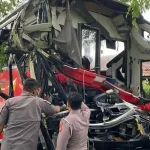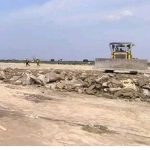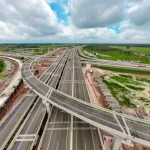Liga Asuransi – In the modern business world, the risk of third-party liability (TPL) claims can arise at any time—from damage to public property and bodily injury to visitors to lawsuits resulting from operational negligence. Although most companies have TPL policies, not all understand how to properly report claims, resulting in many cases resulting in delays or even denials by insurance companies.
This is where the role of an insurance broker becomes crucial. Brokers not only help select the right policy but also ensure each claim is processed effectively, structured, and according to procedures, significantly increasing the chances of claim approval. Especially in TPL claims involving third parties, communication and document completeness are often key challenges. Without professional assistance, companies can face significant financial risks and reputational damage.
In this article, you’ll learn a complete guide on how to properly report a Third Party Liability Insurance claim with the help of a broker. This includes the required documents, reporting steps, mistakes to avoid, and tips for quickly approving your claim.
If your business wants to ensure a smooth, fast, and highly successful claims process, working with a professional broker is the best option. L&G Insurance Brokers is ready to partner with you in optimally managing every risk and claim.
Why Should TPL Claim Reporting Be Done Correctly?
Reporting a Third Party Liability (TPL) claim is not a trivial process. This type of claim typically involves a third party who has suffered a loss, placing your company in a position to provide strong explanations, evidence, and documentation to ensure the claim is accepted and processed properly by the insurance company.
1. Avoid the Risk of Claim Rejection
TPL claims can be denied if the report is late, the information provided is inaccurate, or the evidence of the incident is incomplete. This process is highly dependent on the accuracy of the initial report. The clearer and more timely the claim is reported, the greater the chance of its acceptance.
2. Helping Insurance Companies Conduct Analysis Quickly
Insurance requires chronological information, physical evidence, loss estimates, and third-party details. If a complete report is provided from the outset, underwriters and loss adjusters can proceed directly to the analysis without the need for additional requests.
3. Reducing the Potential for Conflict with Third Parties
TPL claims often create tensions between companies and victims of losses. When reporting is done incorrectly, third parties can become dissatisfied, increasing the risk of lawsuits.
4. Maintaining Company Reputation
Delays or errors in reporting can tarnish a company’s reputation. Through a professional claims process, businesses can maintain public and partner trust.
5. Ensuring Effective Police Protection
TPL policies only cover losses that comply with reporting procedures. This means that if the report is not properly filed, the company cannot use the benefits of the policy purchased.
General Situation thatTrigger Claim Third Party Liability (TPL)
TPL claims can arise in various business sectors, including construction, manufacturing, logistics, hospitality, energy, and retail. Essentially, a claim arises when your company is deemed liable for losses suffered by a third party. The following are the most common situations that give rise to claims:
1. Damage to Third Party Property
This is one of the most common occurrences, especially in construction projects and industrial operations. For example:
- Damage to residents’ homes due to vibrations from heavy equipment.
- Fence or vehicle hit by forklift in warehouse.
- Public roads are damaged due to being passed by heavy vehicles.
Situations like this almost always trigger claims that require strong evidence.
2. Bodily Injury
These incidents are usually more sensitive because they involve human safety. Some examples:
- Visitors slip in the mall or hotel area.
- Outsourcing workers were injured due to company negligence.
- Residents who were hit by falling material from the project area.
Personal injury cases often require a more in-depth investigation by a loss adjuster.
3. Operational Events that Disrupt Third Party Activities
In many industries, operational disruptions can trigger TPL claims, such as:
- A pipe leak caused flooding to another property.
- An electrical incident caused downtime at a neighboring business.
- Excessive air or noise pollution that causes complaints.
4. Accidents Involving Company Operational Vehicles
This happens frequently in the logistics and supply chain industry:
- The company truck hit another vehicle.
- The load fell and damaged public property.
- Incidents in parking areas or loading docks.
5. Worker or Contractor Error
Human error is one of the highest causes of TPL claims, for example:
- Work tools are dropped and hit a third party.
- Procedural errors that cause accidents.
- Project supervision that does not comply with SOP.
When Should Third Party Liability Claims Be Reported?
Reporting a Third Party Liability (TPL) claim should not be done until the situation worsens or until a formal claim has been filed. One of the basic principles of liability policies is “as soon as reasonably practicable”—which means reporting should be done as soon as possible after the insured becomes aware of a potential claim. The sooner the report is made, the greater the chance of a successful claim.
Following are the conditions that must trigger claim reporting:
a. An incident occurs that results in damage or injury
For example:
- A third party suffered injuries while in the project area.
- Third party vehicles or property are damaged as a result of your work activities.
- There is an operational disruption of another party arising from your company’s work.
Even if a third party has not filed a complaint, any physical incidents still have to be reported as a precautionary measure.
b. The emergence of a written demand / complaint letter
Once the third party sends:
- Letter summons
- Complaint email
- Compensation claim letter
- Notification from attorney
Therefore, the client must immediately forward the report to the broker. Delaying reporting in such circumstances could result in a claim rejection.
c. There is a potential for serious claims even if there is no major damage.
Example:
- Minor incidents that occur in public environments or in work areas with a high risk of exposure
- A minor incident recorded on CCTV that could potentially lead to future prosecution
- A verbal complaint that sounds “light”, but the third party seems dissatisfied
In liability, small claims can escalate into major lawsuits. Therefore, reporting early is always safer.
d. Third Party Appoints Lawyer
If a third party has appointed legal counsel, it’s a clear sign that the issue will escalate to a formal dispute. Brokers need to be aware of this early on to prepare a documentation strategy, timeline, and support for the insurance company.
Process ReportingThird Party Liability Claims Through Brokers
Reporting a claim through an insurance broker offers significant benefits to the insured, as the entire process is more structured, expedited, and minimizes the risk of error. The broker acts as a professional intermediary, ensuring that every step complies with the policy provisions and insurance company procedures.
The following is the ideal process flow for reporting a TPL claim through a broker:
a. Collecting Initial Information from the Client
When an incident occurs, the broker will ask for basic information to ensure the chronology is clear from the start, such as:
- Time, location, and form of the incident
- Identity of the injured third party
- Estimation of damage or injury
- Are there any witnesses or other supporting evidence?
- Initial actions taken (e.g. evacuation, security reports, etc.)
This initial information helps determine whether a claim could potentially fall under policy coverage.
b. Brokers Help Prepare Official Chronology
One of the important tasks of a broker is to arrange official chronology systematic, clear, and factual. A good chronology will make it easier for the adjuster to assess the incident, resulting in a faster claim decision.
In its preparation, the broker will:
- Avoid language that could lead to negative interpretations
- Ensure there is no excessive admission of guilt
- Ensure technical details match policy coverage
- Arrange the flow of events frombefore–during–after incidentin sequence
c. Prepare the necessary supporting documents
Supporting documents are mandatory. The broker will ensure everything is complete, for example:
- Photos or videos of the damage
- Complaint letter or summons from a third party
- Internal company report / security report
- Witness identification if required
- Incident minutes from the field team
- Initial loss estimate
All these documents will be curated by the broker before being submitted to the insurance to avoid misinterpretation.
d. Broker Reports Claim to Insurance Company
Once the documents are complete, the broker will:
- Convey claim notification to the guarantor according to the format
- Send complete supporting documents
- Communicating urgency and risk exposure
- Do follow-up routinely to the insurer until the process is running
Usually the broker will also ensure that the claim is officially recorded in the insurance system (registered claim), so there is no risk of the report being considered late.
e. Coordination of the Formation of Loss Adjusters (If Necessary)
For serious TPL claims, insurance companies often appoint a loss adjuster.
Brokers will help:
- Set up a survey schedule
- Coordinate meetings between adjusters and clients
- Explain the technical matters necessary for the adjuster to understand the project background.
The broker’s role here is crucial to ensure that clients do not give incorrect answers and do not make statements that could weaken their claim position.
f. Periodic Monitoring and Updates
The broker will provide regular updates to the client regarding the status of the claim:
- Are additional documents required?
- Results investigation temporary
- Request for clarification from the adjuster or insurer
- Estimated time for claim decision to be issued
All communications are structured so that the claims process remains transparent.
g. Negotiation and Finalization
If there is a difference of opinion between a third party, client, and insurer, the broker will help bridge and negotiate so that the claim decision remains fair.
The ultimate goal is to ensure that:
- Claims are paid according to policy provisions
- The client did not bear the costs that should have been covered by the policy
- The process runs with the best results for all parties
Important Documents That Must Be Prepared When Reporting a Liability Claim
Documentation is the most crucial foundation in the Third Party Liability claims process. The more complete the documentation prepared from the outset, the faster the claims process will proceed and the lower the risk of rejection. A broker will help select, organize, and ensure that all documents comply with insurance company standards.
The following is a list of documents that are generally required to be prepared:
a. Chronology of Events Report
This document contains official explanations regarding:
- Details of the date, time and location of the incident
- Parties involved
- Accountable sequence of events
- Direct impact on third parties
- Emergency response measures
The chronology is the most important document in a liability claim because it is the adjuster’s initial reference.
b. Photos and Videos of the Damage
Visual evidence helps insurance companies:
- Validating claims
- Assess the level of damage
- Determining policy coverage
- Avoid disputes in the future
Brokers will usually provide “guidance” on what type of photos should be taken (close-up, wide shot, surrounding conditions, etc.).
c. Identity Documents of the Injured Third Party
This includes:
- Third party ID/KTP
- Contactable contact
- Object owner data (if the damaged vehicle/property)
This helps validate that the claim actually involves a third party as defined by the policy.
d. Official Complaint Letter from a Third Party
Usually in the form of:
- Letter of claim or summons
- Damage report
- Request for compensation
This document strengthens the basis of the claim that the third party actually filed a claim according to the terms of the policy.
e. Proof of Ownership or Loss Value
Example:
- Vehicle registration certificate (if the accident involves a third party vehicle)
- Repair invoice/quotation
- Damage estimate from the workshop
This evidence helps determine the range of claim values.
f. Internal Report / Security Report
If an incident occurs in an operational area, there is usually an internal report such as:
- Security report
- Incident logbook
- Safety incident report
- Daily activity report
This document helps to see the operational context when the incident occurred.
g. Contracts or Operational Documents
Some liability claims depend heavily on:
- Work contract
- operational SOP
- Work permit or permit
- Agreement with vendor
The broker will assess whether the contract has an indemnity clause that affects the claim decision.
h. Additional Documents Requested by the Adjuster
In some cases, the adjuster may ask for:
- Statement from witness
- CCTV footage
- Other evidence that can strengthen the claim
The broker will ensure that all additional documents are submitted in the correct format.
Conclusion
Reporting a Third Party Liability claim isn’t simply a matter of submitting documents and waiting for a decision. This process requires a thorough understanding of the process, policy terms, coverage limits, and communication techniques with the third party and insurance company. Many claims are delayed or even rejected not because the loss is invalid, but because of technical errors in reporting, incomplete documents, or non-compliance with policy provisions.
This is where the role of an insurance broker becomes crucial. Brokers help ensure that every step—from initial reporting and evidence gathering to communication with the adjuster and compensation negotiations—is carried out according to the highest standards. With professional assistance, the risk of claim rejection can be minimized, and the settlement process can be faster, more accurate, and more profitable for the client.
If your business wants to be assured that liability claims are handled professionally, don’t do it yourself. Entrust the process to an experienced team.
—
DON’T WASTE YOUR TIME AND SECURE YOUR FINANCIAL AND BUSINESS WITH THE RIGHT INSURANCE.
HOTLINE L&G 24 JAM: 0811-8507-773 (CALL – WHATSAPP – SMS)
Website: lngrisk.co.id
Email: halo@lngrisk.co.id
—













